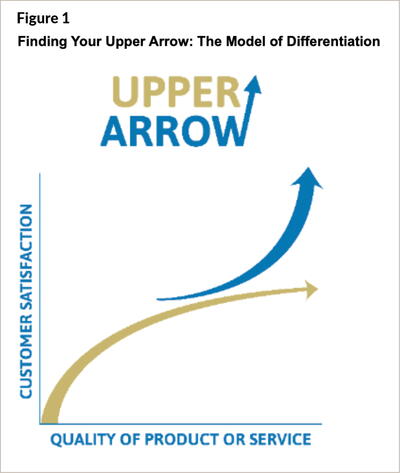
“You will never make it as a consultant. You don’t have what it takes. And when you want a job, don’t come back here. This door is closed.” These were the final words of my supervisor before I left my civil engineering job to begin my own consulting company. After thanking him for the opportunity, I quickly left his office and literally did a happy dance down the hall. I wasn’t leaving a job; I was leaving a supervisor who was not a good leader, and a culture that I could not stand to work in for one more day.
Since then, I’ve found through working with hundreds of clients that we are in need of a retention revolution. For local governments, shrinking workforces, costly recruitments, and strapped budgets have created a desperate need to reevaluate our retention strategies. Retention can no longer be an “HR issue,” and must be the responsibility of all employees, beginning at the top.
In my own small workforce of 10 employees to companies I’ve helped with over 2,000 employees, I have noticed three essential components required to pull off a retention revolution:
1. Changing our mindset from “the way it’s always been done.”
People have more options than ever before. An employee can find hundreds of new opportunities during their lunch break. We have to get past the idea that employees must adapt to us and the traditional way of doing things. Instead, we need to ask ourselves how we can adapt to the changing workforce to create a culture where people are not only satisfied, but loyal.
2. Utilizing a tool set to begin creating a culture where people want to be.
You probably already know there is an industry-wide problem with retaining good employees, but what are we supposed to do about it? Tools like the Upper Arrow, which we’ll describe, can help us frame discussions, begin designing new solutions, and implement these strategies to create a culture by design, and not by default.
3. Honing our skills to be a leader that people choose to follow.
To create a culture where people want to be, it must begin at the top. Learning to be 100% present with our employees, focusing on being a cheerleader who celebrates wins, and identifying a personal brand will help you become a better leader for your team.
As practitioners, we are quick to want to get to the “how.” I’ll spend the remainder of this article focusing on describing and utilizing the Upper Arrow tool to help begin your own retention revolution.

What is the relationship between quality and customer satisfaction? I’ve come to understand that there is a law of diminishing returns between the quality of service and customer satisfaction, represented by the gold arrow in Figure 1. Customers expect quality service, and if they do not receive it, then they will not work with you in the future. After reaching a certain quality, it’s what I call your “Upper Arrows” (the blue arrow in Figure 1) that jumps above the point of diminishing returns to set you apart and make customers not only satisfied, but loyal.
For example, we expect an airline to get us to our destination safely, but it doesn’t really matter if we arrive within one minute or 10 of our designated arrival time. So airlines have found different Upper Arrows beyond an on-time and safe arrival to make customers loyal to their brand, such as creating frequent flier mile programs, offering free baggage, free Wi-Fi, or allowing free itinerary changes.
It’s easy to replace customers with employees in this model. We must offer a quality employee experience through competitive pay and benefits, but how do you go beyond that baseline and what are your Upper Arrows that differentiate you from other organizations?
Frequently, employees I’ve worked with describe the perfect workplace as one that “feels safe” or is “fun.” Culture is the number-one Upper Arrow that leads to retaining your best employees, but it can be hard to pin down what creates a great culture. As a starting point, I’ve identified a few Upper Arrows that contribute to a great culture — the Six F’s: financial, flexibility, fulfillment, food, future opportunities, and fun.
1. Financial
Are you providing competitive financial compensation? Employees must feel like they are compensated fairly as a baseline to stay. If you are unable to increase wages, look to see what creative benefits you can tweak to help bridge any gaps between your competitors’ rates. Make sure you market these benefits — like excellent retirement packages, extra vacation time, and wellness programs that help maintain a work/life balance — in job advertisements, like the city of Orem, Utah.
2. Flexibility
How are you being flexible with your employees? Do you allow flexible time off or hybrid work schedules when possible? Are you flexible with your employee’s priorities? Flexibility in both work hours and structure has become one of the biggest differentiators in today’s market. The town of Little Elm, Texas, has every Friday afternoon off and allows for flexible schedules.
3. Fulfillment
Do your employees connect with their work on a personal level? Are they proud of what they do and understand the difference it makes? As local governments, this can help set you apart from private competitors, but you need to be intentional about connecting an employee’s day-to-day work with the value of public service. The city of Southlake, Texas, has clearly defined city-wide values and connects each employee’s job goals with these values.
4. Food
How are you organizing around food? Do you have free food or potluck events for employees? I know it may sound silly, but this has repeatedly come up as a differentiator when speaking with employees. A little free food can go a surprisingly long way to make employees feel recognized. In the city of Eagle Mountain, Utah, the employees often hold themed food contests throughout the year. I have been able to experience the salsa contest in the summer, the chili cookoff in the fall, and the Dutch oven cookoff in the summer.
5. Future Opportunities
Can your employees envision what a future looks like for them in your organization? Do they know what steps to take to get a promotion or raise? Learning and career development have become a key factor in employee satisfaction. Workforce planning helps foster employees and helps them see that if they invest in you, you will return in kind. Washoe County in Nevada has an organizational effectiveness team that oversees employee training and leadership development.
6. Fun
How do you facilitate a culture of fun in your workplace? Do employees feel like they can celebrate wins and great work? Making time to appreciate employees contributes to a sense of pride and belonging. Give your employees the power to create their own traditions that are meaningful to them, and intentionally celebrate wins through formal acknowledgments such as organization-wide communication or events. At Kaysville City, Utah, they make sure to have fun with their employees, including escape rooms at leadership retreats, a pickleball round robin tournament in the spring, and a golf tournament in the summer.
Next Steps: Evaluate and Take Action
Take a moment to honestly evaluate how your organization is performing on the Six F’s. Using the table in Figure 2, rate your organization on a scale of one to 10 on the Upper Arrows and take stock of a few things you’re currently doing and ideas for improvement.

I challenge you to take some time at your next leadership meeting to introduce the Upper Arrow model and ask your team what your organization’s Upper Arrows are. Create the common language and begin the discussion. After you’ve identified some of the Upper Arrows you already have, look for gaps in the Six F’s and brainstorm how you can begin to improve.
To successfully have a retention revolution, we must start candid conversations at the top about what we do well and where we need to do some work. As leaders, you have the power to create cultures by design and not by default.
To learn more about the retention revolution, visit sydnespeaks.com.

SYDNE JACQUES, PE, CSP, is a keynote speaker, TEDx speaker, CEO of Next Level Leadership and a consultant. (linkedin.com/in/sydne-jacques)

LINDSAY JACQUES is a former senior research associate at ICMA and a local government professional with more than five years of experience. (linkedin.com/in/lindsay-jacques)
New, Reduced Membership Dues
A new, reduced dues rate is available for CAOs/ACAOs, along with additional discounts for those in smaller communities, has been implemented. Learn more and be sure to join or renew today!
